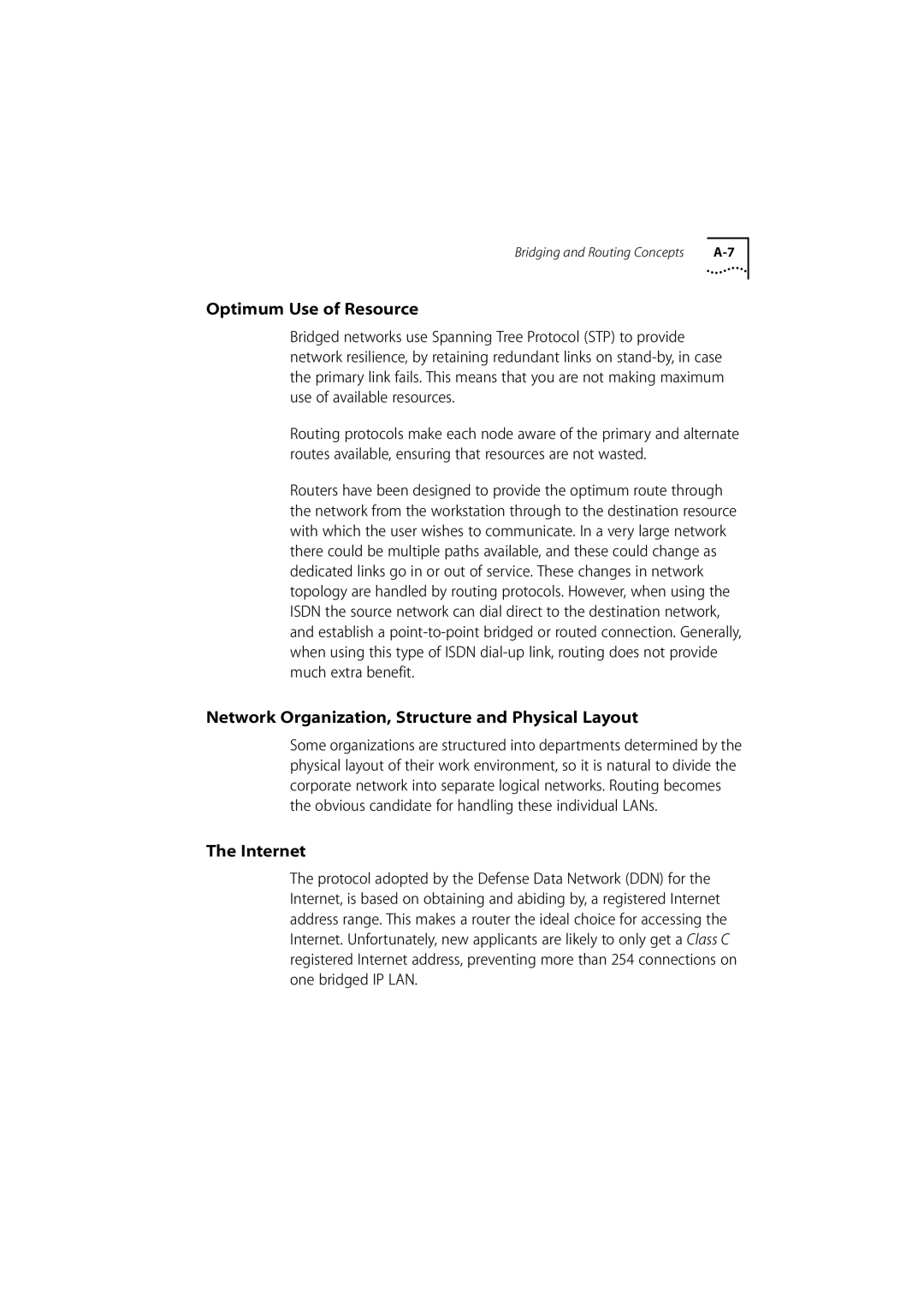Bridging and Routing Concepts |
Optimum Use of Resource
Bridged networks use Spanning Tree Protocol (STP) to provide network resilience, by retaining redundant links on
Routing protocols make each node aware of the primary and alternate routes available, ensuring that resources are not wasted.
Routers have been designed to provide the optimum route through the network from the workstation through to the destination resource with which the user wishes to communicate. In a very large network there could be multiple paths available, and these could change as dedicated links go in or out of service. These changes in network topology are handled by routing protocols. However, when using the ISDN the source network can dial direct to the destination network, and establish a
Network Organization, Structure and Physical Layout
Some organizations are structured into departments determined by the physical layout of their work environment, so it is natural to divide the corporate network into separate logical networks. Routing becomes the obvious candidate for handling these individual LANs.
The Internet
The protocol adopted by the Defense Data Network (DDN) for the Internet, is based on obtaining and abiding by, a registered Internet address range. This makes a router the ideal choice for accessing the Internet. Unfortunately, new applicants are likely to only get a Class C registered Internet address, preventing more than 254 connections on one bridged IP LAN.
